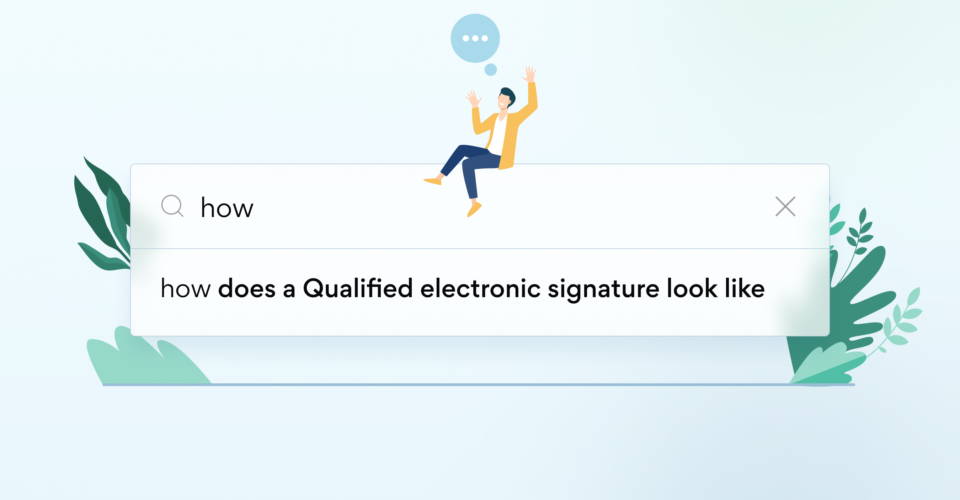There are various forms of electronic signatures. But only the so-called qualified electronic signature is legally equivalent to a handwritten signature. What sets it apart from the rest, what does it look like, and why should you sign with it?
What is not considered a qualified signature?
All the ways you confirm your identity in the virtual space can be called electronic signatures. However, these methods differ in their type as well as security level. In order for an electronic signature to be lawfully equivalent to a handwritten signature, it must meet the criteria of a “qualified” signature.

Here are some examples of electronic signatures that do not meet the qualifying criteria:
- Your e-mail signature
- A picture of a handwritten signature pasted into a document
- A signature drawn with a computer mouse
- Handwritten signature on a courier’s tablet
Why would these be considered unsafe and unqualified? Because many of them can be easily forged and used by another person.
It is likely that your bank, online stores, and government e-systems are also connected by an electronic signature – for example, using the Smart-ID app. These are sufficient for websites to identify them, however, Smart-ID is not necessarily a qualified eSignature as well.
What is a qualified electronic signature?
That email for a signature to be legally equivalent to a handwritten signature, there must be a way to reasonably prove that it was signed by you and not by someone impersonating you. So it requires a qualified tool that verifies your identity.
This can be a mobile signature that is issued by the mobile operator with the new SIM card – since it is issued only to you, it becomes a guarantee that you signed. Without a mobile signature for a qualified e-mail, a special USB device issued by the Registry Center, an electronic identity card or a qualified “Smart-ID” can be used for the signature.
Second, you need a qualified e-mail address. Signature systems, such as Mark Sign, confirm your identity and create a unique tag of who signed the document and when. Qualified email signature functions and regulations are established in the eIDAS regulation of the European Union, valid since 2014.
What does a qualified electronic signature look like?
An electronic signature looks completely different from a handwritten signature – it does not have a unique shape. It is however meant to store data and accumulates a lot of information about the person, time, security level, etc.
Mark Sign Electronic Signature (3).png It consists of three main components.

1. Name and surname of the signatory
An electronic signature requires you to confirm your identity with a smartphone with codes known only to you. Therefore, it does not need a form (e. g. a signature by hand) – because no one else will be able to sign for you anyway.
2. Qualified electronic signature mark
Your name alone is not enough – a special Qualified Signature tag proves that you’ve been identified by a security-compliant signature platform like Mark Sign. Generally speaking, this tag is both a tool to place the signature and a neutral observer that ensures that the signature is signed using all security standards.
3. Date of signing and exact time
This quality of the electronic signature is crucially important and is superior to a handwritten signature. It proves that the document was signed during the validity of the certificate and there is no possibility to change the existing data after signing. Not only do you add your signature, but you also provide proof that you added it to this particular document, and any subsequent changes will be visible during the signature verification. Even if a single word is altered, the qualified signature system will record the change and evaluate that the signatures added before are invalid.
The authenticity of a qualified signature can be verified. It is not just a note – it is an indication that the signature is valid and that any third party can verify its legitimacy.
Thus, a qualified electronic signature looks simple but hides complex and strict security requirements. There is a reason why some government institutions and businesses only accept this particular form of signature. It proves the author of the signature, the time of signing, and even changes to the document, so the qualified signature system guarantees the transparency of the signature.



